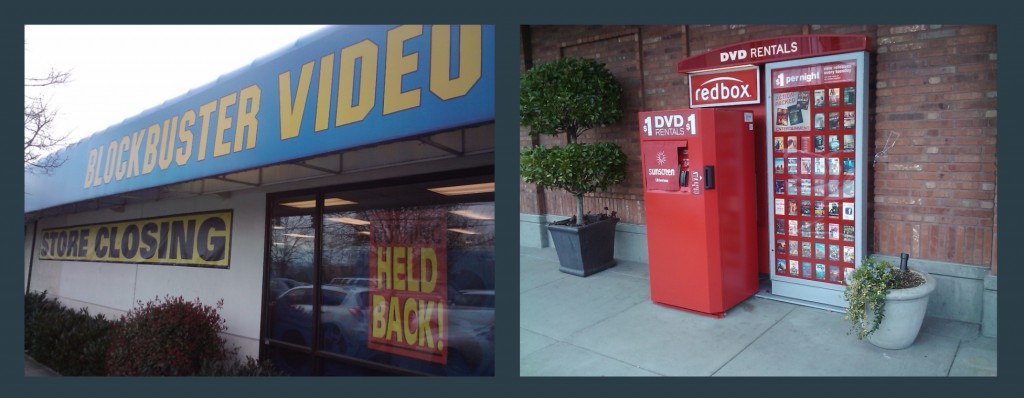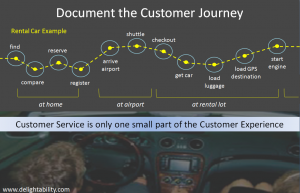Product and Service Village
Products and services don’t invent themselves, not yet anyway. And, their intended audiences rarely self-generate a groundswell of demand. Products and services with even a modicum of complexity require an organization to deliver those products and services over their life cycle. The organization should stand ready to provide assistance to customers from the moment they begin “kicking the tires” to the time they become a customer and hopefully a repeat customer and advocate. Inside the organization, it takes a small village to make all of this come together and to keep it operating smoothly.
Why Villages Need a Chief
Human history has taught us that villages want chiefs. What villagers really seek is a way to resolve disputes, a point person to make and enforce rules, and a source of wisdom. The chief is the supreme leader and organizer that hopefully keeps everybody safe, healthy, and prospering, even amid change and conflict. The chief is the one person accountable for everything, good and bad.
Product Manager as Chief
In many organizations, the product or brand manager is made to be the de facto chief of the product or service village. Think of the arrangement to be more of a central hub in a hub and spoke arrangement that keeps the business flowing around that product or brand. In smaller companies or startups the founder is often this chief.
Worry Might be the Chief’s Biggest Product
 But, talk to any product manager in those sorts of arrangements (if you are able to) and you’ll discover that they’re running the busy program and don’t have much time for anything, let alone your conversation. They simply have to worry about everything and everywhere. In many innovation cultures they are also expected to be thought leaders as well as the protective visionary that understands all of the nuances and continuous changes in the business landscape and customer ecosystem. It’s daunting and exhausting, rife with employee burnout, outright failure, and lost potential for employees, organization, and customer alike. If you have been a product manager or worked closely with one, you know what I’m talking about. The to-do list always exceeds the to-done list by a factor of 10 or more. And, worse, few seem to understand or care because they too are running some version of the busy program. In Switch vernacular, this isn’t so much of a people problem as it is a situation problem. The good news is that this is a solvable problem.
But, talk to any product manager in those sorts of arrangements (if you are able to) and you’ll discover that they’re running the busy program and don’t have much time for anything, let alone your conversation. They simply have to worry about everything and everywhere. In many innovation cultures they are also expected to be thought leaders as well as the protective visionary that understands all of the nuances and continuous changes in the business landscape and customer ecosystem. It’s daunting and exhausting, rife with employee burnout, outright failure, and lost potential for employees, organization, and customer alike. If you have been a product manager or worked closely with one, you know what I’m talking about. The to-do list always exceeds the to-done list by a factor of 10 or more. And, worse, few seem to understand or care because they too are running some version of the busy program. In Switch vernacular, this isn’t so much of a people problem as it is a situation problem. The good news is that this is a solvable problem.
It’s time to spark a new conversation
If you’d like to change this, you need to spark a new conversation in your organization. Here is some thinking to accompany you. Any improvement you make to a customer’s experience can be force fit into one of four categories as shown in the figure at the top of this article, namely:
- more relevant communications
- improved customer thinking
- organizational readiness
- better product and service interactions
If you have my book, The Experience Design Blueprint, reference Figure 7.9 in Ch 7: Improving the Journey. So, your organization needs to build competencies in each of these areas. Expecting all of this to fall on the shoulders of one person is wishful thinking, but chances are it isn’t producing very good results.
Benefits of distributed leadership
Formalizing leadership across the 4 competencies will improve the performance of your product manager. It will increase the firms absorptive capacity, improve the organization’s overall performance, empower employees, and enable the organization and brand to better connect with its intended audiences.
But, that isn’t the only power of the levers. They also serve as a system of checks and balances. After all, you can’t have more relevant communications or better product and service interactions if you don’t have improved customer thinking. And, if your organization isn’t ready or up to the task, then better product and service interactions or more relevant communications will never actually materialize.
The 4 Action Levers give you a way to do mental bookkeeping for making improvements in the areas of more relevant communications, improved customer thinking, organizational readiness, and better product and service interactions.
Compare this to the act of cleaning a four room house by moving all of the mess into one of the rooms. You’ve only shifted the problem temporarily. If you visit the affected room, you’ll notice the problem straight away. If you know classical physics then you also know Newton’s third law states that for every action there is always an equal and opposite reaction. That is an axiom that applies here. If you invest in activities behind one of the action levers then realize the other levers will be affected, too.
 Why the Metaphor of Lever
Why the Metaphor of Lever
Lever is an intentionally chosen word because with a lever, you amplify a small input force to produce a larger output force. It is a simple machine to gain mechanical advantage. With customer experiences, we can invest small actions into better understanding customers and gain a greater output of Improved Customer Thinking.
Use the 4 Action Levers to identify projects and programs that aim to improve the organization’s ability to deliver more remarkable products and services, build more authentic relationships, and communicate more effectively with intended audiences.
- Improved Customer Thinking – Who are the audiences you are concerned with today and in the near future? What do you want them to think, feel, do and remember? Remember audiences can be internal or external to the organization. See related post Customer Schmustomer: Audience Schmaudience. See Project Ideas.
- More Relevant Communications – What are the communications requirements across initiatives, time, and channels to authentically connect with your intended audiences? Remember that communications also includes internal communications. See Project Ideas.
- Better Product & Service Interactions – What are the intended experiences you want your audiences to have over time when dealing with your organization? See Project Ideas.
- Organizational Readiness – Customer experiences and journeys don’t happen in a vacuum. Organizations must be ready to interact with customers and also be mindful of the behind the scenes operational requirements. What will be needed to get and keep others ready inside and beyond the organization? See Project Ideas.
 Concentrate improvements in any one area and you have the potential to make incremental improvements. But, synchronize improvements in each area and you have the potential to engage employees, create remarkable customer experiences, and smooth your operation. Do this correctly and you’ll still have time to leave early on Fridays, or work less each day as companies in Sweden have recently elected to do.
Concentrate improvements in any one area and you have the potential to make incremental improvements. But, synchronize improvements in each area and you have the potential to engage employees, create remarkable customer experiences, and smooth your operation. Do this correctly and you’ll still have time to leave early on Fridays, or work less each day as companies in Sweden have recently elected to do.
Recipe #28: Find the Critical to Executions
Reflect on your current and past execution gaps that prevented your organization from being ready to deliver remarkable experiences. As you go forward intentionally designing customer journeys, note what will be required in order to close the execution gaps. These comprise your list of CTEs: critical to execution. As you explore new projects and programs make CTEs part of your organization’s customer experience vernacular.
about the author
Gregory Olson is a consultant, speaker, and author. He authored The Experience Design Blueprint, a book about designing better experiences and then making them come true. The models in the Experience Design BLUEPRINT are equally relevant to organizations of all types and sizes including start-up entrepreneurs, nonprofi ts, for-profi ts, and government.
His latest book is L’ impossi preneurs: A Hopeful Journey Through Tomorrow, a light-hearted and deadly serious book about a brighter future where we live more meaningful lives, governments invest in people and sustainable progress, and technology serves humans.
 Gregory Olson founded strategy and design firm Delightability, LLC. with the belief that if you delight customers then success will follow. He believes that we all have the potential to do better, as individuals, organizations, and communities, but sometimes we need a little help. Gregory also serves as a volunteer board member for Oikocredit Northwest, a support association for social investor and financial institution, Oikocredit International.
Gregory Olson founded strategy and design firm Delightability, LLC. with the belief that if you delight customers then success will follow. He believes that we all have the potential to do better, as individuals, organizations, and communities, but sometimes we need a little help. Gregory also serves as a volunteer board member for Oikocredit Northwest, a support association for social investor and financial institution, Oikocredit International.






 Gregory Olson founded strategy and design firm Delightability, LLC. with the belief that if you delight customers then success will follow. He believes that we all have the potential to do better, as individuals, organizations, and communities, but sometimes we need a little help. Gregory also serves as a volunteer board member for
Gregory Olson founded strategy and design firm Delightability, LLC. with the belief that if you delight customers then success will follow. He believes that we all have the potential to do better, as individuals, organizations, and communities, but sometimes we need a little help. Gregory also serves as a volunteer board member for 








 Greg is a virtual chief marketing officer to small and medium sized businesses. He founded Delightability, LLC. with the belief that if you delight customers success will follow. Greg authored
Greg is a virtual chief marketing officer to small and medium sized businesses. He founded Delightability, LLC. with the belief that if you delight customers success will follow. Greg authored 

